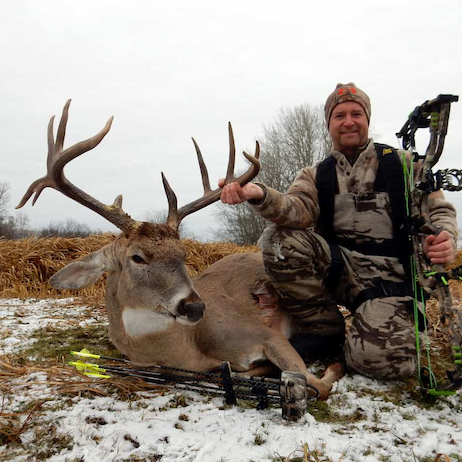With the whitetail rut fast approaching, there’s no better time to talk about tree stand safety. While tree stands offer archers an undisputed advantage, this benefit comes with risk and occasionally great cost. It happens every year; hunters across North America fall from their stand. Lucky ones escape injury, some incur minor injuries and yes, a few are paralyzed or worse – these are the facts.
Did you know that approximately one-in-three bowhunters will, at some point in time, fall from a tree stand. I don’t know about you, but that number makes me uncomfortable. If you don’t know anyone personally who has fallen from a stand, I’ll bet you’ve heard of someone who has. Even more sobering, you probably know someone who has suffered an injury as a result of a tree stand fall. In my small social circle, I know a fellow who is now bound to a wheelchair because of a tree stand fall.
I actually fell from a stand over 30 years ago. Young, naïve and misguided by the fallacy of perceived invincibility, I wasn’t wearing a safety harness of any sort. Installing a lock-on, the base kicked away from the tree and I went airborne. Fortunately, I was able to grab for the stand and caught myself mid-fall. Dangling precariously, I was able to swing my legs, wrap them around the tree and eventually regain support. That was a lesson I will never forget. Narrowly escaping injury, I was one of the lucky ones.
As bowhunters, we must take precautions to minimize the chances of a fall. This means taking extra care to select a safe tree, using an approved climbing system (with a lifeline) along with an approved tree stand, and most importantly we must always use an approved full-body harness.
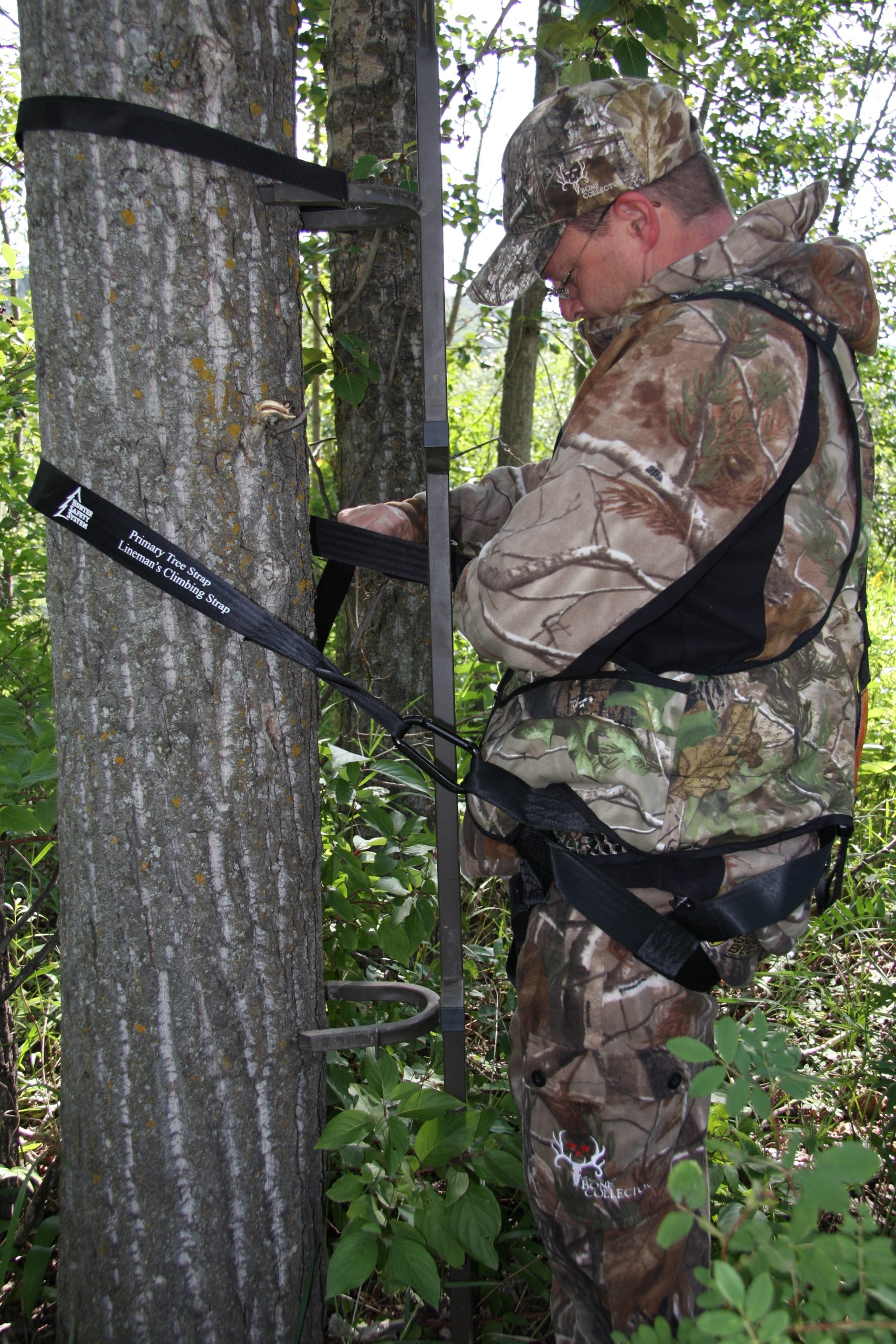
Choose a Safe Tree
The first step to hunting safely from a stand is selecting the right tree. Dead trees are not an option. Poplars can work well as long as they are big enough and strong enough. When available, old-growth spruce or other coniferous trees are my first choice.
The type and size of the tree has some bearing on how safe it is. Always use bigger diameter live trees – ones that are as straight as possible. Whenever possible, select one with at least a 12-inch diameter. Bigger, healthy coniferous trees with a trunk diameter of at least that, at a height of 16 feet or more are usually most ideal.
Securely mounting the stand to the tree is paramount, unless you’re using a climber (then other safety considerations apply that we won’t address here). No stand should ever be loose. While most manufacturers have a reasonable mounting system, I always add a little insurance by reinforcing my stands with two additional larger heavier duty ratchet straps. Once the stand is in place, mount a tow cord and drop it down for easy access at the bottom of the tree. I generally attach one and I also carry a second for backup. Mount a lifeline to the tree – something like Muddy’s The Safety Harness Lineman’s Rope with Prusik Knot – and you should be safe and secure from falls, from the time you leave the ground to the moment you return to it.
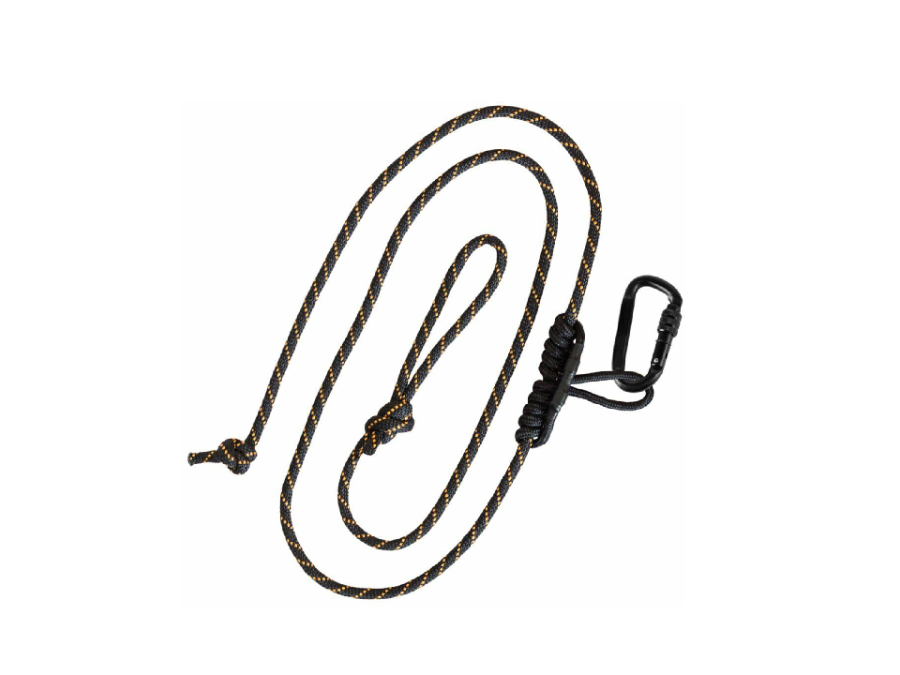
Approved Climbing System
Risk enters the equation long before the stand is mounted to the tree. Safety must always be your first consideration the moment our feet leave the ground. Always use an approved step system and that lifeline. Options are plentiful but the most common include screw in steps, pole climbers, climbing rails, climbing sticks, and ladders. Regardless of preference, make sure that each step or section is correctly constructed and mounted securely to the tree, so no unsafe reaching or uncomfortable stretching is required to advance up or down the tree or as you climb into, or get out of, the stand.
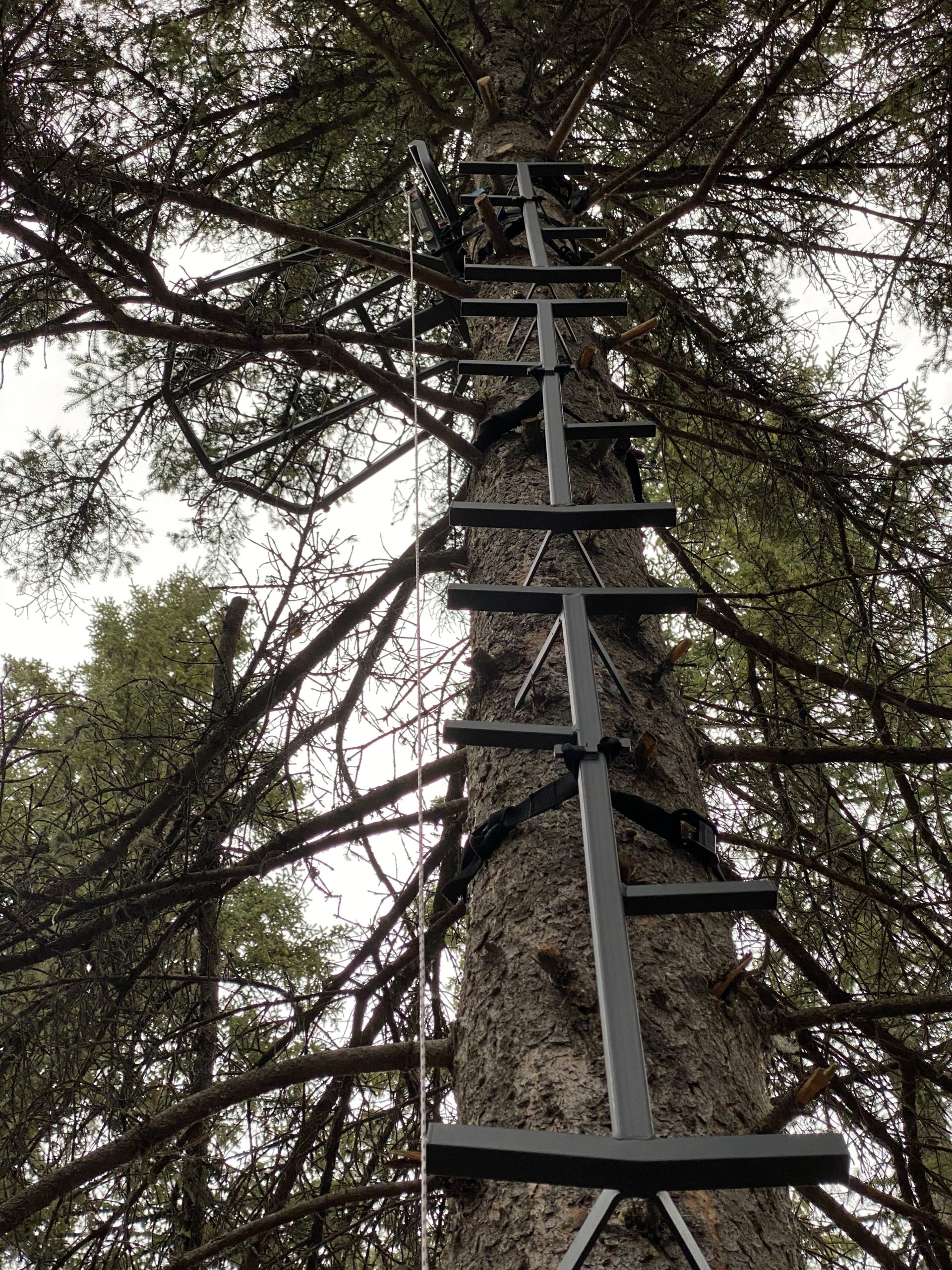
The importance of using an approved climbing harness can’t be stressed enough. Today, it is common practice for bowhunters to employ similar harness systems for installing and climbing in and out of tree strands. In most situations, there’s no excuse for not using a full-body harness and lifeline.
More on Full-Body Safety Harness Systems
According to the Treestand Manufacturers Association (TMA), North America’s designated authority for establishing treestand safety standards, required, by U.S. law at least, is the inclusion of a full-body harness within the packaging of each commercial treestand sold.
Today, every bowhunter should be using a TMA approved fall arrest system. One worth checking out is the
Muddy Safeguard Treestand Harness and the Hawk Elevate Pro Treestand Safety Harness. Hunter Safety System (HSS) also offers a line of safety harnesses worth looking at.
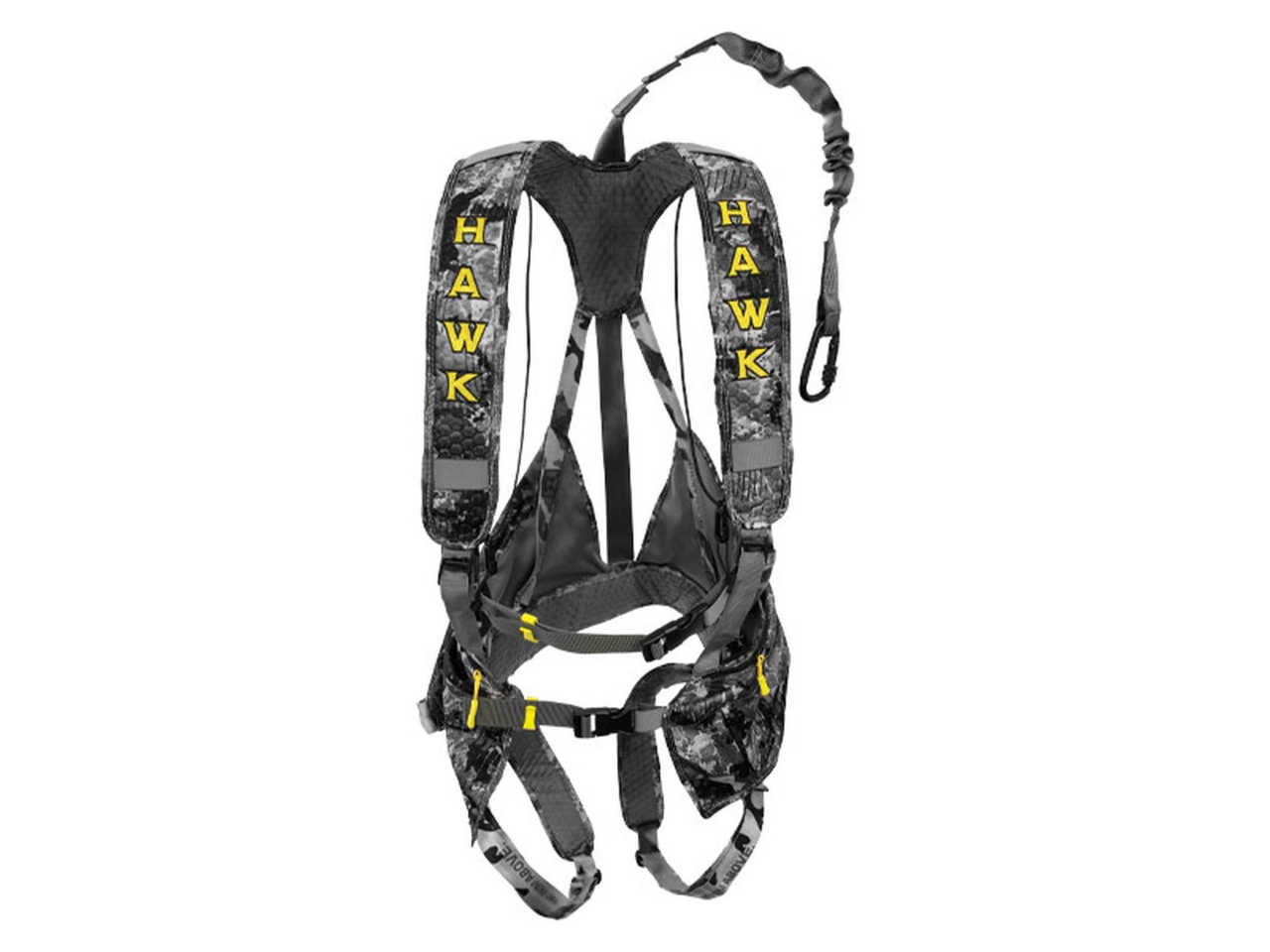
Additional Precautions
Before climbing the tree, remove bulky clothing, your backpack and bow. Always use the tow cord to pull your gear up to the stand. Regular rope works, but I something like the Speed Winder Hoist Rope made by Tink’s is handy and inexpensive.
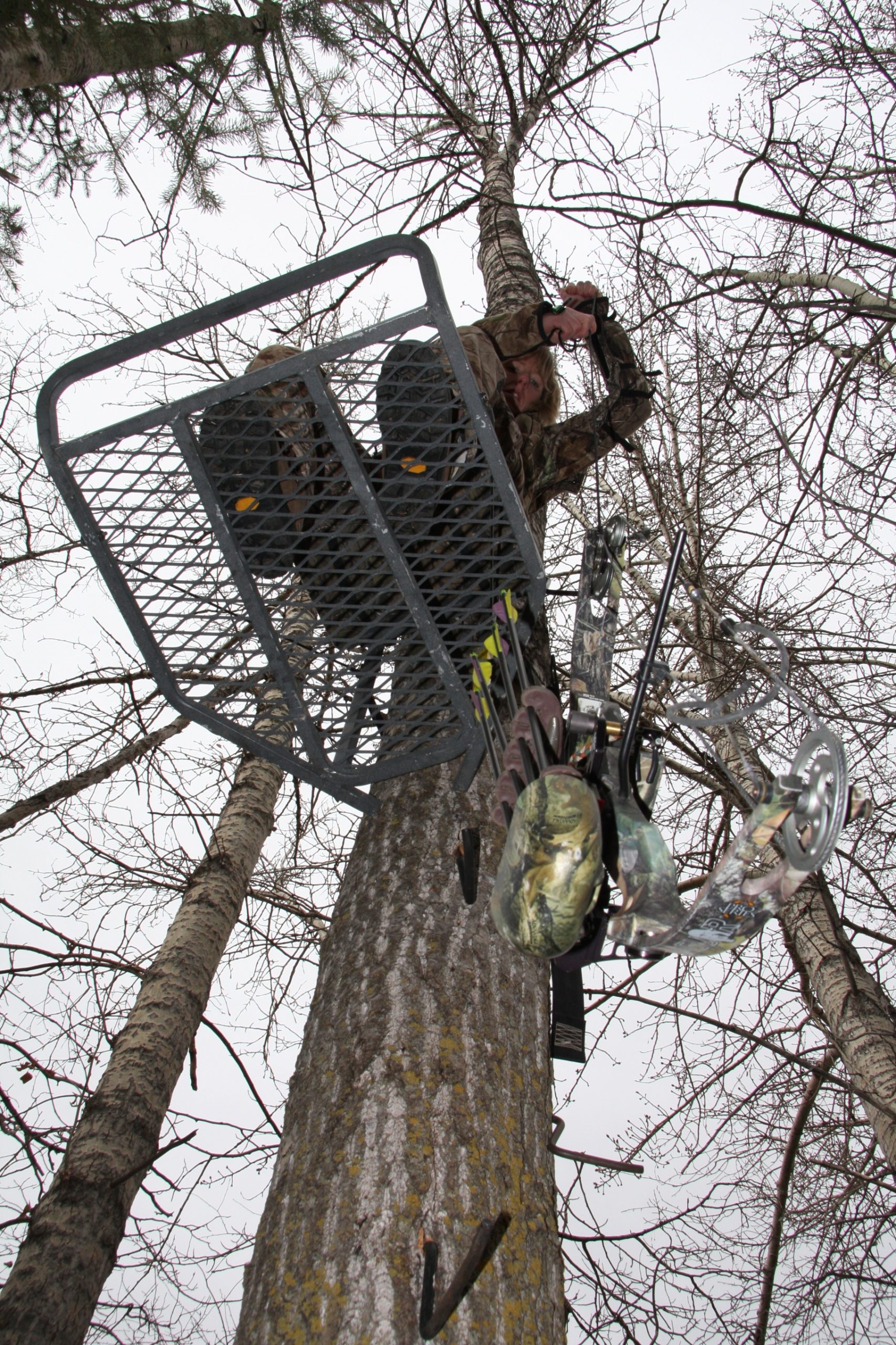
Bulky clothing or gear can snag on branches and cause accidents. Prior to taking your first step, make certain that your gear is fastened to the cord and move it to the opposite side of the tree. By doing this, you move the tow cord out of the way of the steps or rungs on the ladder.
As for climbing, slow and easy is best. Always maintain at least two points of contact, three is better. Calculate each step. Place each hand and foot carefully and as close to the tree as possible to avoid slipping. The same rules apply to climbing on to the tree stand platform or stepping off of the platform as you begin your descent.
For more information on stand safety and treestand safety guidelines, visit www.tmastands.com. This site is loaded with safety tips, a listing of certified products, product recall information, standards, and more.

